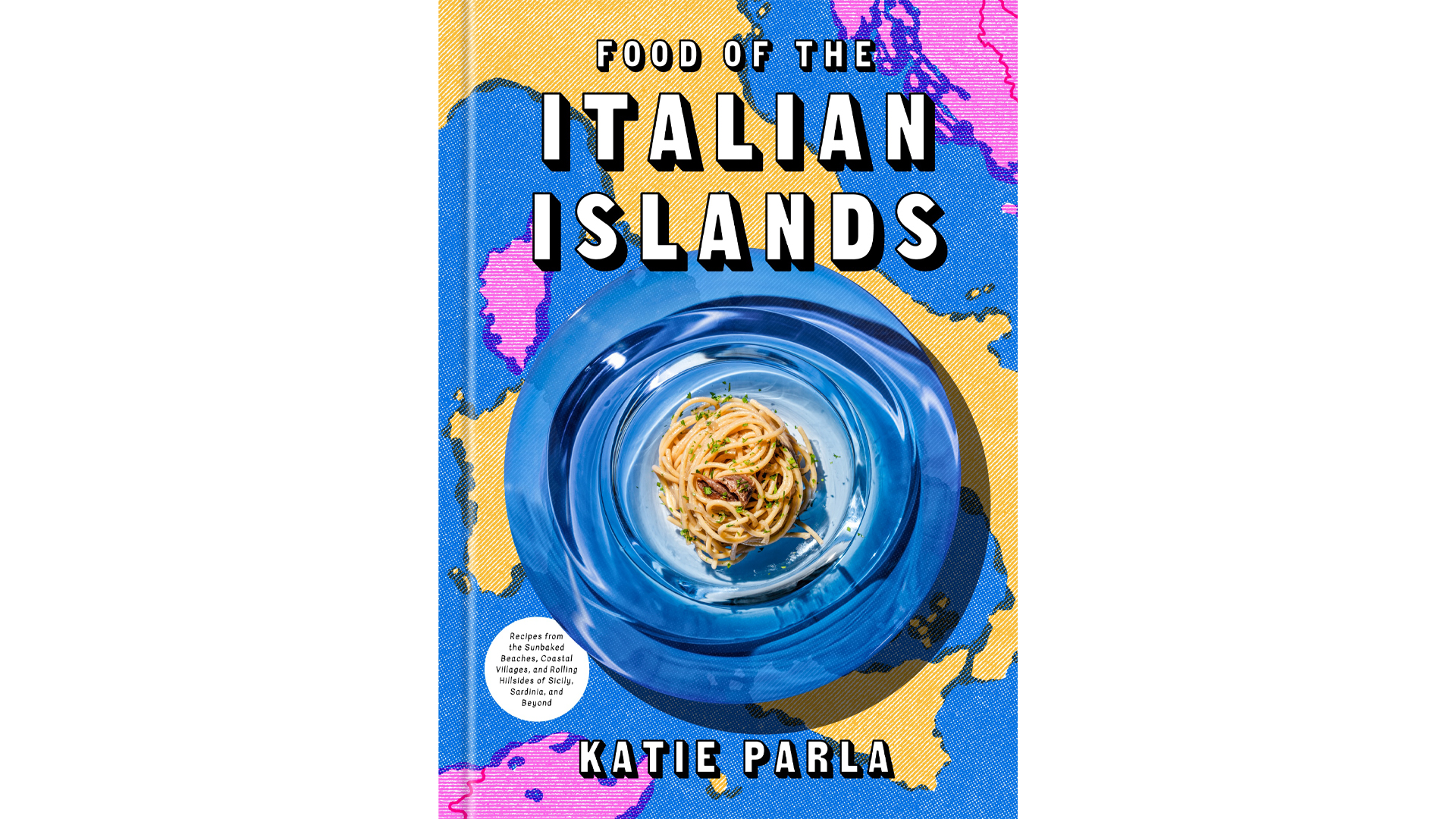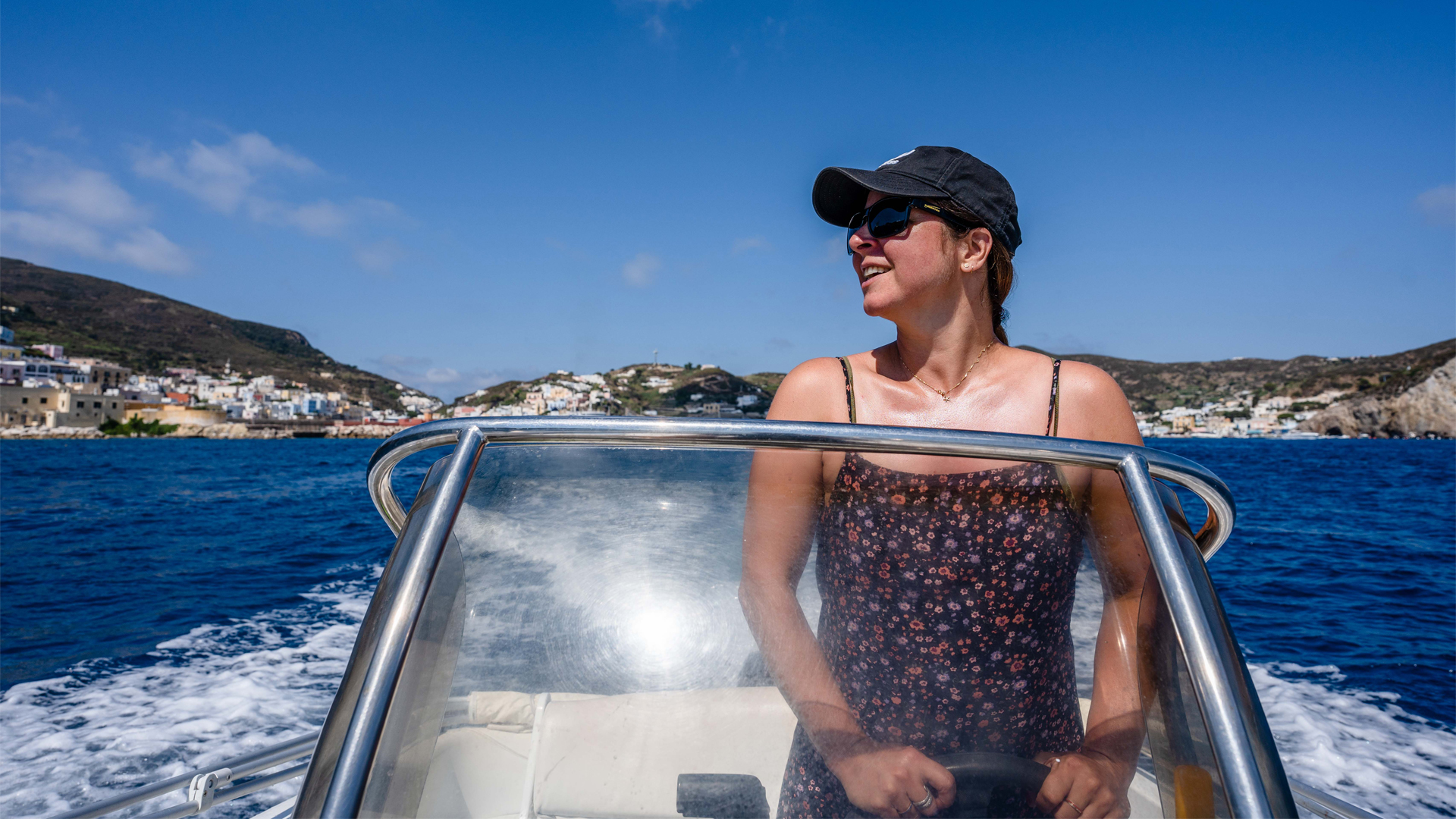Katie Parla grew up in New Jersey in an Italian American family, but for the last twenty years she has been living in, writing about, and eating her way through Italy. She’s chronicled her food experiences online, magazines and newspapers, as well as consulting on film, television and contributing to more than 35 books.
Her previous recipe collection, Food of the Italian South, was a New York Times bestseller. Her latest collection, Food of the Italian Islands, continues where Italian South left off. America Domani had the opportunity to interview Katie Parla about her new book as she phoned in from a Venetian glass factory where she is collaborating on a line of glassware. The following interview has been divided in two parts and edited for length and clarity.
America Domani: You’ve already published books about Rome and Southern Italy. Did the Italian Islands seem like the next natural progression?
Katie Parla: When I started thinking about food of the Italian South, I knew I wanted to exclude Sicily altogether because it was just too much to tackle and it would take attention away from Molise and other less familiar regions. I wanted to focus on places that maybe people knew about like Puglia, but really showcase the stuff they should know about like Molise and Basilicata. I put Sicily aside.
When I was thinking about the next book, I thought the islands could be a really interesting thing because I love unveiling the truths of Italian food and beverage culture which are often the exact opposite of what people assume. For the past twenty years, I spent a lot of time traveling in Sardinia and Sicily and the Pontine Island and the Neapolitan Archipelago. And a lot of the greatest food experiences have been land-based things like produce, meat, lots of legumes, and rabbits and pork. It wasn’t like spaghetti with clams all day long.
To be honest, spaghetti alle vongole is my death row meal, but I really love all these other elements that tell you something more about the culture than spaghetti with clams – that is a pan-Italian dish at this point. I wanted to continue the theme of my other titles, which is an immersion in a topic that has similarities, while also revealing the differences that make the individual islands distinct.
AD: While writing the book, you visited all the islands, Do you have a favorite?
KP: It’s so hard. I love Sardinia, but that's the easy answer because Sardinia is so huge. Of the smaller islands, Ponza is incredible. And Pantelleria is wild. And I love them all so intensely.

(Photo Credit: Ed Anderson)
AD: All of the islands are connected to different regions on the mainland and Sardinia and Sicily are regions of their own. Was there a general theme you saw across the islands or does each island’s cuisine reflect the nearby region?
KP: Naples was the most wealthy and powerful city in Europe and it influenced all corners of its empire, essentially. The food of Naples really influenced Procida, which is just off the coast. But also, Naples was a really big influence that binds together the Pontine Islands and the Neapolitan Islands which themselves are so isolated from each other, and are so isolated from the mainland at times, especially during certain weather moments.
Another element that brings together the islands, at least the ones off the western coast, is the Spanish dominion. Because until 1861, everything from southern Lazio was all under Spanish control. That was particularly important from a culinary standpoint as botanical species from the Americas were being introduced.
However, in Venice you don't find very much tomato-based stuff. But all over the south, there are lots of tomatoes and potatoes from the Americas, eggplants from the previous Arabic cultural influence, and really a diversity of cuisine. It is a very omnivorous approach to cuisine –
That’s a sort of commonality. And of course, each place is influenced by its particular geography, and topography. But they are working with the same building blocks because of that power structure.
AD: Was there anything you found surprising in your research?
KP: I've been in Italy for a really long time and I don't know if I have been truly profoundly surprised by things in particular. Some things that don't surprise me are how much illegal food production happens, like people making things in the traditional way in violation of the law. For the record, I am in favor of this.
AD: Regarding Ischia, you write about the rabbits which are not so common anymore in America. Are they widespread in Italy or only found on the islands?
KP: Rabbit is something that is absolutely ubiquitous. You can go to any supermarket or any butcher shop, and it’s not one of those things you have to place a special order for. They always have it.
In terms of regional food identity, it’s very strong in Ischia. When you go out and look at a menu, nine times out of ten, rabbit is going to be an option. Although in a trattoria or restaurant setting they almost always ask that you reserve it in advance.
Is it an island thing? It is, in Ponza, Procida and Ischia for sure. It’s a little bit less present in Sardinia. You're more likely in Sardinia to find poultry like game birds, wood pigeons.
AD: When writing about Palermo, there is a whole section about the offal and organ meats in the city. Is there an organ meat you recommend for those who are curious?
KP: I always say that tripe is the gateway offal. If you close your eyes and it's properly seasoned, you can kind of pretend it is a squid. And let’s say the spleen and lung in a lard-poached stew situation is when you have fully crossed the threshold.
AD: There's a photo of you holding a sandwich with spleen coming out. I don't think I’m going to make that one myself.
KP: I wish you could get spleen. It’s so hard to find. It honestly tastes like Steak - like cheesesteak meat.
AD: Some of the recipes in the collection include horse meat and suckling pig which are difficult more Americans to acquire. Can these meats be substituted?
KP: There's no substitute for suckling pig. But if you want to give a very lean piece of steak the grilling treatment, that's easy enough to do. Then you just season with oil and oregano the way they do it in Catania. In fact, the places on the street in Catania that are serving grilled horse meat also serve beef in the same preparation. Now horse slaughter was banned by Congress until some years back, so it’s not illegal anymore, there just isn't a place to buy horse meat. That's more a little nod to my Canadian friends up north.
AD: You book includes a lot of bean recipes. Do people on the islands use beans differently than the mainland?
KP: In Linosa, they have a big lentil tradition. In Ponza, they have a big “cicerchie” tradition. Lentils and “cicerchie” predate Spanish importation of beans from the Americas. When beans were introduced, they enriched the already existing dried legume scenario.
It’s hard to imagine today, this is one of the things that surprised me – the sea really is super, super dangerous, especially in certain seasons. Historically there are winds that blow relentlessly at certain times of year. You can't really guarantee that you can get on or off some islands in certain seasons.
And people have historically provided for themselves by having lots of ingredients in their cellars. Beans are high reward ingredients. Even though there are some specific beans, you find dried legumes in soups and stews enriching pasta dishes on all the islands.
Ian MacAllen
Ian MacAllen is America Domani's Senior Correspondent and the author of Red Sauce: How Italian Food Became American. He is a writer, editor, and graphic designer living in Brooklyn. Connect with him at IanMacAllen.com or on Twitter @IanMacAllen.

